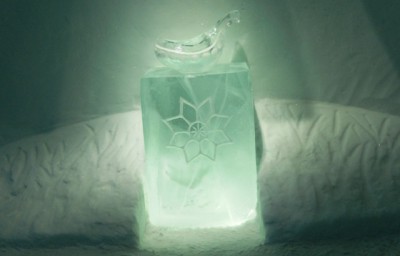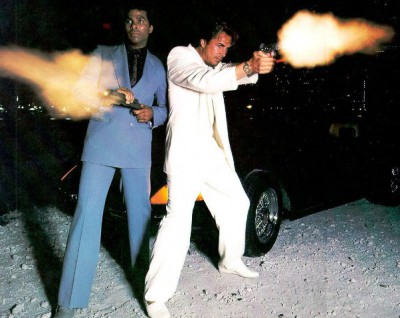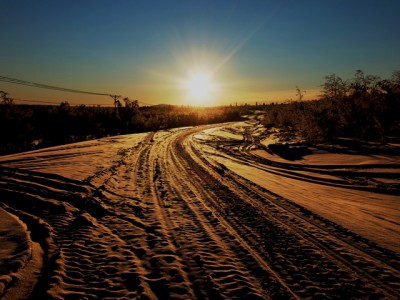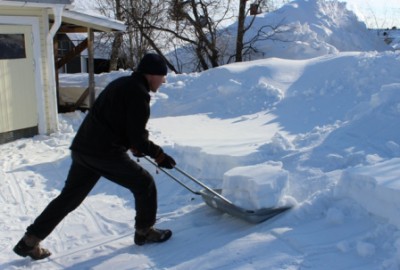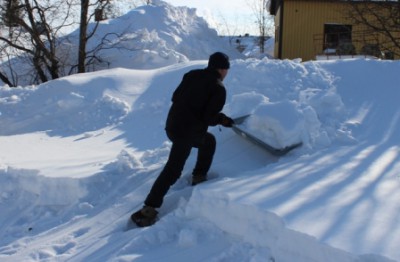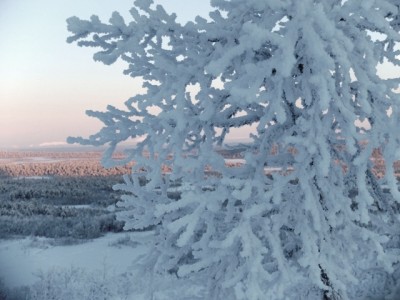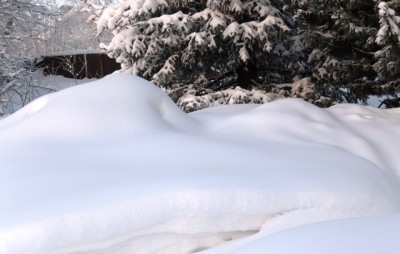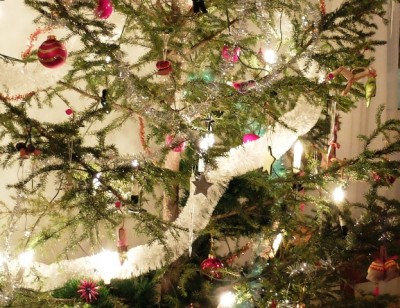Lingonstigen (‘The lingonberry path’), an unexceptional short street in Kiruna, you might think. If you believe that suburban and town streets are often named after what used to be there, then this should have been dry ground where lingonberries grew.
You wouldn’t easily find yourself in this street unless you intended to go there. It’s a dead end, just below the town hall, facing the mine and hidden by the hill behind and the town hall’s clock tower. Off the beaten track, you might say.
The houses are a terrace, very modern-looking. Clean, functional architecture. Good sized windows, attractive outline, plenty of space around because of the way they’ve been set back from one another. At first glance you’d take them for houses built in the 1990s. At a second glance they could have been built in the 1960s, as examples of bright modern housing.
From its start Kiruna was a ‘model’ town and community, showcasing the best in housing, town planning, working conditions, transport facilities. This small row of houses in Lingonstigen is an unusual example of early ‘modern’ housing that was built in the 1940s.
It’s hard to believe but it shouldn’t be so surprising. If you try and date most of the architecture here you’d guess wrong – it’s always earlier than you think. Kiruna used the most up-to-date designs and ideas. The mining company (LKAB) employed the best architects, wanting good living conditions for people in the town.
Lingonstigen provided modest but very comfortable living in the late 40s and onwards, in a fast-growing community. The terrace looks out to the mine – at the time it was built, still the centre of prosperity in the town. This direction also faces the south western sky, so the most is made of the twilight hours and winter sunshine and warmth. It’s still a very pleasant street to be on, with views out towards the mountains over the mining area.
Except that as you approach it your eyes are drawn to the large crack spreading across the side of the end house. That crack tells us the street has no future – the land beneath it is slowly sliding into a pit.
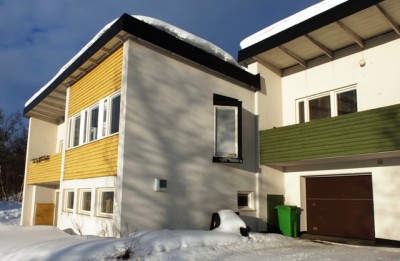
If Lingonstigen is typical, and I believe it is, it tells us how we’ll experience the slow disappearance of familiar parts of the town.
It’s easy to forget this street exists. One of the reasons is that you can’t really see it anymore. There used to be a road leading over a bridge running next to its entrance, but a couple of years ago the bridge was removed because it was unsafe, and the road was closed. In this way, parts of town slowly disappear from view. Not suddenly, shut up and knocked down, but slowly pushed into a corner, out of sight.
Over the main road running beneath Lingonstigen are other areas, closer to the collapsing ground. You can still walk here. LKAB have put up fences, and gates, but mostly the gates are left open. It gives you a bit of a thrill, to walk through, as if you know you shouldn’t be there but somehow you’ve managed to sneak in. This is probably LKAB’s way of acclimatising us to the gradual disappearance of town. They don’t suddenly prevent access to somewhere, instead, long before it’s necessary, they subtly suggest that we shouldn’t be there. Then after ‘allowing’ us through for a few years, one day they decide to lock the gate but by then we’ve got used to the fact that the land is no longer ‘ours’.
We went for a walk down Lingonstigen in the afternoon sunshine this weekend, more to admire the view than to look at the street. The view was indeed spectacular, but the street was more interesting than we expected. At first it felt like walking down any other Kiruna street, with cars out front and children’s toys leaning against a wall. Until you notice that there’s nothing to see through most of the windows and, in fact, most of the houses are empty. One of the houses is still lived in, but the cars in the street are probably from somewhere else. Until you get close you wouldn’t know.
We pressed on to the end of the street where there is a grand old wooden house. Also completely empty.
Lingonstigen is already on the edge of the pit. It will have been years ago, probably, that the mining company bought up the houses and the story of their disappearance began. People may have carried on renting them until they were ready to move on, or other people may have rented them, and the street would have looked the same. But the mark of catastrophe was already on them. Now they’re empty – it’s easy to see where this is going.
From a distance everything looks normal. The cracks aren’t visible. There are cars in the street, and some signs of people living there. It’s a wonderful row of housing, that will crack some more, and then, eventually, LKAB will put up some fencing, and knock them all down.
Then it will just be a path, with a view. Perhaps the lingonberries will return.

